#biochrome
Text

CAMOUFLAGE
A disguise to hide from others
predators or enemies
by illumination or colors
in combination to blend in
with the environment
A natural phenomenon
for both preys and predators
to avoid detection,
color change with pigments
or with physical features
Octopus bears
microscopic pigments
called biochromes that
absorb and reflect light
to change its real color
Others, such as polar bears
have specific physical structures
in their hairs that scatter
light of all colors
to make them appear white
Chameleons change their colour
to hide and to reflect their moods
A group of zebras looks like
a large mass to a lion
to protect the herd
Predators like leopards and tigers
have this disruptive coloration
that helps in moving or hiding
in between the branches
before attacking its prey
Some blend well
with their surroundings
by color, texture and shape,
seen in insects like spiders,
leaf butterfly, dragonfly, katydid,
Most animals copycat or mimic
other animals to fool and escape
from their predators
in appearance or behaviour
or by sound and odor
Viceroy butterflies mimic
the monarch species
to safeguard them from their predators,
like birds that avoid monarch butterflies
as they are poisonous
There are other examples
of camouflage:
Owl, Uroplatus Gecko,
Toads, Seahorse, Frog, Spider,
Stick Insect, and Snow Leopard.
wild life survival
humans use intelligence
to save face and kill
©Johnny J P Lee
14 May 2024
HAIBUN (Gogyoshiren / Haiku)
Photo Credit: Selection from my album
(Photographer Unknown)
#poetryportal#writerscreeds#smittenbypoetry#spilledwords#writingthestorm#poeticstories#inkstainsandheartbeats#writtenconsiderstions
9 notes
·
View notes
Note
Jin... forgive this ignorant human... but how do you see?
My visual sensors are embedded into the biochrome of my faceplate, allowing protected visual perception while maintaining a streamlined profile. I would say that the understanding of vision is an elementary piece of Phyrexian knowledge, one that fleshlings naturally lack, but nothing about my own function is elementary. The intricate subroutines which upkeep and expand my visual acuity would escape you.
-J
14 notes
·
View notes
Text
Animal Crossing Fish - Explained #226
Brought to you by a marine biologist getting back on her feet...
CLICK HERE FOR THE AC FISH EXPLAINED MASTERPOST!
I know I've been gone for a while - it's not because of the new Pokemon game, although it helped. I'm back to finish up what I started. So, today, let's start with a blank slate - the white versions of the guppy, the freshwater angelfish, and the koi. [Long post warning because pictures!!!]
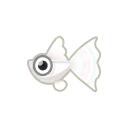
Specifically, these fish are the White Tuxedo Guppy, the White Butterfly Koi, and the White Angelfish. All three appeared once in AC Pocket Camp for its Fishing Tourney #27. The theme was "weddings" and occurred in June of 2020, so explains why they're all white.

We've already covered the taxonomy and delved deeper into these species elsewhere in the series. They are here -> Guppy, Koi, and Angelfish. For review, all three of these fish are freshwater species, native to different river systems, and all are species humans like to keep ornamentally. Likewise, these white versions represent specially bred specimens that not only feature a strange white coloring, but also different fin lengths and shapes. This is especially true for the butterfly koi, specifically known for its long, graceful fins.
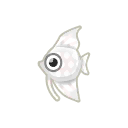
But I want to take a "minute" to talk about pigments in the animal kingdom and then the certain genetic anomalies that fuck it up. So lets talk about pigment - what is it and what does it do? To sum it up very quickly, biological pigments, or biochromes, are molecules produced within specialized cells that absorb and reflect certain wavelengths of light, aka, they give animal skin, eyes, fur, etc. color. These colors assist animals in their daily lives, by providing camouflage for animals so that their prey or their predators don't see them coming or going, respectively. Other animals display color to communicate, either to attract a mate or tell a rival to back off. Pigments can even protect the skin from UV radiation (as is the function of melanin in human skin). This is all grade school science class stuff, but it's really important to ecology. Color and color patterns can tell you so much about how an animal lives its life, even without observation. But like all living functions, pigment can get messed up, too, and in a lot of ways.
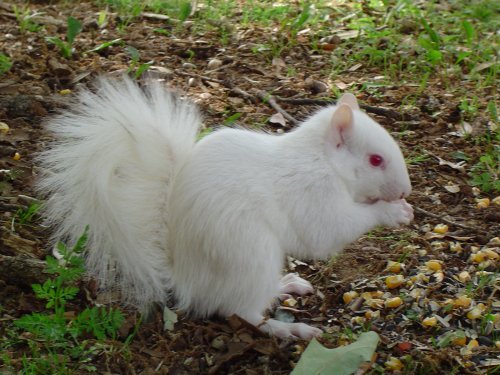
By Stephenkniatt at English Wikipedia - Transferred from en.wikipedia to Commons., Public Domain
Perhaps the most famous pigment disorder is albinism. This disorder is characterized by an absence of pigmentation, turning the animal white (in plants, albinism is from the absence of chlorophyll). The term albinism has many incomplete definitions, however, we typically recognize it as a lack of melanin, which results in an all-white body and red eyes. It is especially apparent in mammals, where melanin is the only pigment we make! This disorder comes with a lot of drawbacks for any animal - an all-white body means they've lost the functions of their species' coloration, they have poor vision and eye development, hearing disorders, and, in some studies, the disorder is found to be "semi-lethal", generally reducing the life span. Fortunately, I don't think the ACPC wedding fish have this condition.

By The original uploader was Dawson at English Wikipedia. - Transferred from en.wikipedia to Commons., CC BY-SA 2.5,
I think our fish for today are Leucistic, in that they have a loss of much of their pigments, but not all. For the fish and for the snake above, pigment is absent in the scales, but the eyes are just fine. Leucism is often mistaken for albinism. The big difference between them is the severity and the pigments lost - albinism is a total lack of melanin, but leucism affects all the types of pigments found in the animal kingdom and at different intensities, and therefore can appear "partial", as seen in piebald individuals. And yes, all sorts of albinism and leucism are specifically bred for in the pet trade.
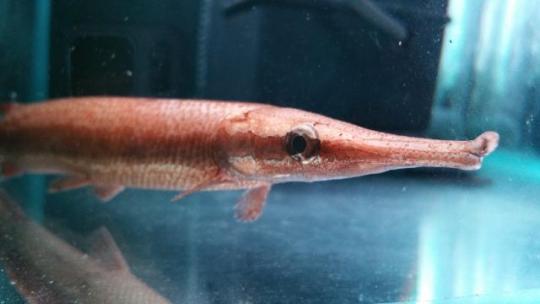
Erythrism is when an individual is strangely more red than usual. I don't have a lot to say about this one but to look it up on Google "erythristic animals" and see how utterly magical they look. Pink bugs are a guarantee.
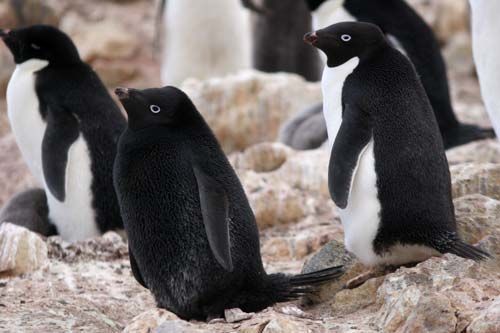
Then there's Melanism, the exact opposite of albinism/leucism - it is the increased production of melanin, making an animal's skin, etc. very very dark, or completely black. Sometimes melanism gets out of hand and also dyes the inside of the animal black, as is the case with Ayem Cemani breed of chicken. Also worth a Google search: "melanistic animals". Enjoy.
And there you have it. Fascinating stuff, no?
#fish#angelfish#guppy#koi#butterfly koi#animals#animal crossing#animal crossing pocket camp#albinism#leucism#melanism#erythrism#pigmentation#biology#science in video games#animal crossing fish explained
11 notes
·
View notes
Text
Quality Control Revolution: Amino Acid Analyzers in the Food and Beverage Industry
Introduction
The Amino Acid Analyzer market is witnessing a surge in demand and innovation, driven by the growing importance of protein analysis in various fields such as pharmaceuticals, food and beverage, biotechnology, and clinical research. Amino acids are the building blocks of proteins and play a crucial role in understanding protein structures and functions. Analyzing amino acid composition is essential for research and quality control in these industries, which is why Amino Acid Analyzers have become an indispensable tool. In this article, we will explore the market trends, key players, and the factors driving the growth of the Amino Acid Analyzer market.
Market Size and Growth
The global Amino Acid Analyzer market has been experiencing substantial growth, with a compound annual growth rate (CAGR) estimated at around 7% over the past few years. This trend is expected to continue, with the market projected to reach new heights in the coming years. The factors fueling this growth include increased research activities in the pharmaceutical and biotechnology sectors, stringent quality control regulations in the food and beverage industry, and expanding clinical applications in healthcare.
Key Players
Several key players dominate the Amino Acid Analyzer market, providing cutting-edge technologies and products that cater to a diverse range of applications. Some of the prominent companies in this market include:
1. Biochrom Ltd.
2. Hitachi High-Tech Analytical Science
3. Shimadzu Corporation
4. Bio-Rad Laboratories, Inc.
5. Thermo Fisher Scientific Inc.
6. Agilent Technologies, Inc.
7. Jasco Corporation
These companies offer a wide range of Amino Acid Analyzers, from high-performance liquid chromatography (HPLC) systems to advanced capillary electrophoresis instruments. They are continuously striving to enhance the accuracy and efficiency of their analyzers, catering to the evolving needs of researchers and industries.
Key Market Drivers
1. Biopharmaceutical Research: Amino Acid Analyzers are essential tools in the development of biopharmaceuticals. The growing focus on protein-based drugs and vaccines has increased the demand for precise amino acid analysis to ensure product quality and efficacy.
2. Food Quality Control: The food and beverage industry relies on Amino Acid Analyzers for quality control and assurance. Analyzing the amino acid profile of food products helps ensure they meet the required nutritional standards and labels accurately.
3. Clinical Diagnostics: In the healthcare sector, Amino Acid Analyzers are instrumental in diagnosing metabolic disorders. They are used to detect abnormal amino acid levels in body fluids, aiding in the early detection and management of conditions like phenylketonuria (PKU).
4. Research and Development: Amino Acid Analyzers are extensively used in life sciences research for studying protein structures and functions, which is crucial in advancing our understanding of diseases and drug development.
Market Challenges
Despite its growth, the Amino Acid Analyzer market faces several challenges, including:
1. Cost: High-quality Amino Acid Analyzers can be expensive, limiting access for smaller research labs and institutions.
2. Technical Expertise: Operating these analyzers requires specialized knowledge, which may pose a barrier for some users.
3. Competition: The market is highly competitive, with many players vying for market share, which can lead to pricing pressures.
Conclusion
The Amino Acid Analyzer market is experiencing steady growth, driven by the increasing need for protein analysis in various industries. As research and development activities in biopharmaceuticals, food quality control, and clinical diagnostics expand, the demand for more advanced and user-friendly Amino Acid Analyzers is expected to rise. The key players in the market continue to innovate, making these tools more accessible and reliable for researchers and industries worldwide. As we move forward, we can anticipate further advancements in Amino Acid Analyzers, offering more precise and efficient solutions for the ever-evolving demands of the protein analysis landscape.
Few Other Promising Reports in Medical Devices Industry
Spine Surgery Devices Market
Lumbar Disc Replacement Device Market
PEEK Implants Market
3D Printed Medical Implants Market
0 notes
Text
Microplate Instrumentation and Supplies Market Size, Type, segmentation, growth and forecast 2023-2030

Microplate Instrumentation and Supplies Market
The Microplate Instrumentation and Supplies Market is expected to grow from USD 2.10 Billion in 2022 to USD 3.00 Billion by 2030, at a CAGR of 4.50% during the forecast period.
Microplate Instrumentation and Supplies Market Size
Microplate instrumentation and supplies refer to the tools and materials used in the preparation, analysis, and storage of microplates. The microplate instrumentation and supplies market research report segments the market based on type, application, and region. It includes Microplate equipment and microplate consumables as its types and clinical and non-clinical fields as its applications. Regionally, the market is segmented into North America, Asia Pacific, Middle East, Africa, Australia, and Europe. The major players in the market include PerkinElmer, Tecan, BioTek, BIO-RAD, Molecular Devices, BMG Labtech, KHB, Promega, Biochrom, Berthold, Awareness, Rayto, Perlong, and Autobio. The market report analyzes the regulatory and legal factors specific to market conditions. These factors include government regulations, compliance, and intellectual property rights, among others. The report provides valuable insights into the market dynamics, including drivers, restraints, opportunities, and challenges influencing the growth of the microplate instrumentation and supplies market.
Microplate Instrumentation and Supplies Market Key Player
PerkinElmer
Tecan
BioTek
BIO-RAD
Molecular Devices
Buy Now & Get Exclusive Discount on this https://www.reportprime.com/enquiry/request-discount/11194
Microplate Instrumentation and Supplies Market Segment Analysis
The Microplate Instrumentation and Supplies market is a growing sector that includes companies involved in the manufacturing and distribution of microplate readers, dispensers, washing systems, and other related products. The target market for these instruments and supplies includes academic research facilities, pharmaceutical companies, biotech firms, and clinical laboratories.
One of the major factors driving revenue growth in the Microplate Instrumentation and Supplies market is the increasing demand for high-throughput screening technologies in drug discovery and development. The rising prevalence of chronic diseases and the need for efficient and effective drugs has led to an increase in R&D investments and a demand for advanced, automated tools that can streamline the drug discovery process.
Additionally, growing applications of microplate readers and other instruments in various research areas such as genomics, proteomics, and cell biology are also fueling market growth. As more researchers opt for microplate-based assays due to their convenience and cost-effectiveness, the demand for microplate instrumentation and supplies is expected to increase.
The latest trends in the Microplate Instrumentation and Supplies market include the development of integrated systems that combine multiple functions in a single device, the use of smaller volumes of samples and reagents to reduce costs and minimize waste, and the increasing adoption of automation and robotics to enhance data accuracy and reproducibility.
However, the Microplate Instrumentation and Supplies market faces significant challenges, including intense competition from established players, the high cost of instruments, and the complexity of integrating different instruments and software systems. Moreover, the COVID-19 pandemic has adversely impacted the market, causing disruptions in supply chains and a slowdown in R&D activities.
According to the report's main findings, the Microplate Instrumentation and Supplies market is expected to grow at a CAGR of 5.1% between 2020 and 2025. The report recommends that companies invest in innovative technologies to develop advanced, integrated systems and expand their product portfolio to cater to a wider range of applications and customer segments.
Overall, the Microplate Instrumentation and Supplies market presents significant growth opportunities for companies that can provide reliable, cost-effective, and efficient solutions that can meet the evolving needs of researchers in drug discovery and development.
This report covers impact on COVID-19 and Russia-Ukraine wars in detail.
Purchase This Report: https://www.reportprime.com/checkout?id=11194&price=3590
Market Segmentation (by Application):
Clinical Field
Nonclinical Field
Information is sourced from www.reportprime.com
0 notes
Text
If we understand the true meaning of melanin, we will come to understand that there's no other race of humans on this planet other than Black People. Eumelanin is the natural selection of all humans. Think about it, Black Skin can produce every skin color hue on this planet, when pheomelanin, per se, can only produce translucent color hues. Yes, there's other types of melanin but I am just using these two levels of melanin as an example.
Humans are not a separate species, and we need to understand this.
1 note
·
View note
Text
Multi-Cuvettes Spectrophotometer Market 2022 Global Demand, Scope and Strategic Outlook - 2029
The Multi-Cuvettes Spectrophotometer Market Market Size At USD 11.3 Billion by 2029, exhibiting a CAGR of 6.1% during 2022-2029
Multi-Cuvettes Spectrophotometer Market Overview
The Multi-Cuvettes Spectrophotometer Market report is a comprehensive overview of the market, including a review of its major segments. Alliances are developed after thorough primary and secondary studies. By speaking with industry experts and collecting their data, in-depth market data is produced. The report provides a thorough account of many market factors, including trends, segmentation, growth prospects, chances, difficulties, and competitive analyses.
Get a Sample copy of the report:
List of Key Players Of Multi-Cuvettes Spectrophotometer Market Report:
METTLER TOLEDO, Thermo Fisher, Agilent Technologies, Shimadzu Corporation, Hitachi, Hach, PERSEE, VWR, Biochrom, Analytik Jena, JASCO, BioTek, Cole-Parmer, PG Instruments, INESA, Shanghai Lab-Spectrum Instruments, PerkinElmer, GBC Scientific
Key Segments Covered in Multi-Cuvettes Spectrophotometer Market
By Type, it is segmented into
UV-Vis Spectrophotometer
UV-Vis-NIR Spectrophotometer
By Application, it is segmented into
Environmental
Medical
Chemical
Metallurgy
Pharmaceutical
Food & Beverage
Geology
Others
Competitive Landscape
Multi-Cuvettes Spectrophotometer Market are showing an increasing amount of interest in creating unique products. In addition, several companies are collaborating, merging, and acquiring one another. In the upcoming years, all of these initiatives are anticipated to drive the global Multi-Cuvettes Spectrophotometer Market to new heights.
The Multi-Cuvettes Spectrophotometer Market Regional Analysis Covers
– North America: United States, Canada, and Mexico.
– South & Central America: Argentina, Chile, and Brazil.
– Middle East & Africa: Saudi Arabia, UAE, Turkey, Egypt and South Africa.
– Europe: UK, France, Italy, Germany, Spain, and Russia.
– Asia-Pacific: India, China, Japan, South Korea, Indonesia, Singapore, and Australia.
Get in Touch with Us: -
Phone No.+1 (704) 266-3234
Mail to: [email protected]
#Multi-Cuvettes Spectrophotometer Market Research#Multi-Cuvettes Spectrophotometer Market Forecast#Multi-Cuvettes Spectrophotometer Market Size#Multi-Cuvettes Spectrophotometer Market Share#Multi-Cuvettes Spectrophotometer Market Trends#Multi-Cuvettes Spectrophotometer Market Overview
1 note
·
View note
Text

Biochrome Brawler
New take on an old old idea I had about "Biochrome" augmentations that allow the user to weaponize/accessorize with telepathically-controlled ferrofluids. Not particularly original, but I still like the name
151 notes
·
View notes
Note
Do you have any ideas about the genealogy of characters hair and eye colors? I know those things exist because it's like that in anime, but I still find it fascinating how hereditary hair colors and eye colors could work in this world if they ever expanded on it. Why do all three Schnee children have white hair when Jaques's natural black hair would be dominant? Why do the colors for blue and red eyes combine to create purple instead of Yang inheriting just one of her parents eyes? Do skin tones correlate to a specific region? It's all pretty interesting to me.
Did you know that when my sister and I started tackling the genetics of RWBY, we genuinely debated whether or not to get rid of unnatural hair and eye colors? If they weren’t such well-established tropes, there’s a good chance that Emerald would have ended up a brunette.
Anyway, back to green hair.
When we talk about colors in animals, there are two main ways of going about it: pigment-producing cells, and structural colors via wave interference.
Chromatophores are cells that make color, found in ectothermic animals such as amphibians, fish, turtles, crocodilians, squamates, crustaceans, and cephalopods. Chromatophores are classified based on their hues: xanthophores (yellow), erythrophores (red), leucophores (white), melanophores (black/brown), and iridophores (reflective/iridescent).
Endothermic animals, such as mammals and birds, get their colors primarily from melanocytes (eumelanin, which produces brown and black; and pheomelanin, which produces red and yellow), and from carotenoids (red-, yellow-, and orange-producing pigments found in plants, algae, and some bacteria and fungi).
It’s a bit of an oversimplification, but it’ll do for now. There are a few outliers that I didn’t mention, like the cyan biochromes found in mandarin dragonets, but the overview above is largely accurate for our discussion.
Structural colors, on the other hand, have nothing to do with biochemistry. They can best be described as a neat physics trick.
Microscopically-structured surfaces that are fine enough to interfere with visible light can affect how wavelengths are reflected (and thus, how our eyes perceive and interpret color). In Morpho butterflies, the shape of the wing-scales (ridged, conical branches) causes the wavelength of light to be staggered and reflected at different heights. This out-of-phase reflection cancels out the longer red light, but leaves the shorter blue light intact.

Wavelengths of light, and how they’re reflected, thanks to the ridged shape of Morpho scales. | Source: Why Is Blue So Rare In Nature?
This is common in a lot of animals with blue or green coloration. Blue jays, peacocks, mandrills, weevils, even chameleons, use structural coloration to achieve their flashy blue and green color palettes.
This is because pigments, biologically speaking, are expensive and time-consuming to manufacture. It’s much more energetically-efficient to use a workaround, like hijacking physical structures, to produce those colors.
That being said, there are some exceptions.
Turacoverdin is a copper uroporphyrin pigment found in turacos, a family of green birds native to Africa.
The olivewing butterflies are a group of lepidopterans that utilize a blue bile pigment called pterobilin.

A dorsal (left) and ventral (right) view of the Menelaus blue morpho (Morpho menelaus huebneri). | Source: Wikipedia contributor user:Archaeodontosaurus.

A dorsal (left) and ventral (right) view of the Bates olivewing (Nessaea batesii). | Source: Wikipedia contributor user:Archaeodontosaurus.
Outside of these fairly rare occurrences, blue and green are more likely to be byproducts of physics rather than chemistry. The odds of natural selection producing a blue-pigmented mammal (either through a genetic mutation to an already-existing trait, or inventing new chemistry from scratch) are pretty much nonexistent.
However, RWBY’s universe isn’t dictated exclusively by evolution via natural selection. It has gods.
Gods which can teleport between places without resulting in local spacetime anomalies. Gods which casually violate the laws of conservation by creating and obliterating matter.
There’s no reason to assume that conventional biology in our universe would be applicable to this setting.
Screw it. RWBY already has six-limbed vertebrates and floating islands, and it’s not like I haven’t wasted hours of my life trying to figure out how to make those work. White hair and purple eyes are the least egregious thing I’ve had to deal with.
As far as hair color goes, my suggestion would be to expand the number of pigments, and make some changes to the genes that control hair, like MC1R.

Green hair could be achieved by having blond as a base template (low amounts of eumelanin and pheomelanin) with higher amounts of dysmelanin, our hypothetical blue pigment. Various shades of purple could be the result of dysmelanin and pheomelanin, paired with certain amounts of eumelanin to make it darker or lighter.
As for white hair, I guess it could be some sort of rare genetic mutation that exclusively affects melanin production in the hair follicles? Maybe something analogous to the mutations found in the LYST and AIM1 genes of polar bears. Or perhaps there could be a fourth type of pigment (let’s call it leucomelanin) that controls for the expression of white and gray in hair.
We could wave our hands and say that Jacques is heterozygous for black hair (Bw), whereas Willow is homozygous for white (ww).

Every time Jacques and Willow have kids, there’s a 50% chance that kid would have white hair. Statistically, there’s no reason why they couldn’t have had three white-haired kids back-to-back, since the odds of that are basically a coin flip each time.
As for Yang’s eye color being purple when her parents’ are blue and red—I guess we could chalk it up to incomplete or partial dominance in heterozygous offspring (Rb), from two homozygous parents (RR and bb)? I’m not sure. Genetics really isn’t my forte, so I’d have to think it over.
On a parting note—I haven’t finished developing the full list of phenotypes unique to each ethnicity yet. But I did decide on a couple. Red, copper, and auburn hair are mainly found in people of Matsu descent (Northern Anima). That includes Pyrrha, Nora, and Roman.
#asks#anon#i speak#eye color#hair color#biology#genetics#for the record this is all purely conjectural#i still need to play around with the biochemistry some more before i'm prepared to say what pigments are responsible for which traits#thanks for the ask!#readmore
7 notes
·
View notes
Photo

[OC] Biochrome Brawler
8 notes
·
View notes
Photo

Reposted from @snobmilano (@get_regrann) - #thanks @lelunetiermilano #snobmilano #trunkshow #zeiss #biochrom #sunglasses #cooper #coolglasses #instaglasses #occhiali #occhialifighi #superblymadeinitaly #wearesmartpeople - #regrann (at Beirut, Lebanon) https://www.instagram.com/p/B0SxFogge-Z/?igshid=4g031dcpefzi
#thanks#snobmilano#trunkshow#zeiss#biochrom#sunglasses#cooper#coolglasses#instaglasses#occhiali#occhialifighi#superblymadeinitaly#wearesmartpeople#regrann
0 notes
Note
Hello, I wanted to make designs for badtimeswithscar, truesymmetry- y’know? Those guys. But I think it’d be easier if I had some idea of what they’re like. Are they like EX? Do they wear clothes that are complimentary to their counterpart? I’d like some ideas :) - litabattoir
Hi! So after seeing this, I actually went and did some investigating on this!
So I went and looked them up on NameMC.

As you can see, BadTimeWithScar is just Demise Scar.
To me, this is odd, because last time I checked BTWScar (which was not too long ago,) he looked completely different. He had black hair and a weird thing with his eyes. They were blue but had a green overlay (or vice versa, I don't remember.)
A lot of people seem to headcanon BtwScar as being vex possessed Scar which I think is incredibly cool! But let's ignore all that for a second and make our own BadTimes design.
Because his name is a play and reversal on Scar's, let's completely opposite Scar's personality and design.
Since season 6, Scar seems to be sticking with a motif each season. In 6 it was pirates, in 7 he's a wizard! So what's the opposite of a wizard? Well, there isn't always one opposite to something. Sometimes there's multiple. If we're thinking interms of sticking with fantasy, it may be a Warlock or a Sorcerer. I feel like evil Warlock BadTimes would be pretty cool!
But what about genre? Well, Fantasy is usually paired with Sci-Fi, so let's try that! So, why not android-themed Bad Times? Or maybe even 'Super ahead of humans in terms of technology' alien BadTimes? At this point, I'm just pulling ideas out of a hat.
I also went and looked up TrueSymmetry!

She's literally the same.
So, let's get creative! I'm not great at character design, (especially those in FalseSymmetry's style. (Seriously, I usually do either monochrome with a few additions or maybe biochrome if I want a challenge, but False has yellow, red, blue, green, brown and somehow makes it all work? Amazing!)) but I'll try my best.
Because True Symmetry is reversal of False, let's make her design reflect that.
False is known for being steampunk-esc and probably the most tomboyish out of the three ladies. So, how about a super girly TrueSymmetry?
The most opposite thing to steampunk in my mind is goth, so why not lolita? Lolita is a super underused clothing style in character design in my opinion, and it can be used super interestingly too!
However, steampunk actually came from 'what victorian era people thought the future would be like.' So, why not what we as of now think the future will be like? How about Cyberpunk TrueSymmetry? I feel like that would be pretty interesting to see too!
TL:DR: Canon BadTimes is Demised Scar.
Retconned BadTimes is an Edgy boy from Hot topic who wears contact lenses.
A popular Fanon BadTimes is Vex Possessed Scar.
I chucked some ideas against a wall and got evil warlock BadTimes, Android/Cyborg BadTimes or Alien BadTimes.
Canon True Symmetry is the same as False Symmetry.
I chucked some ideas against a wall and got Lolita TrueSymmetry or CyberPunk TrueSymmetry.
Sorry if this isn't much help. I'm the headcanons guy, not the factually accurate guy. Hope this helped regardless though!
P.S. please send in your designs once you finish! I really want to see what you get up to!
#hermitcraft#hcraft#hermitblr#hermitcraftheadcanons#gtwscar#goodtimeswithscar#good times with scar#falsesymmetry#false symmetry#camaccounts#camaccountheadcanon#posted 08.05.20#longpost
77 notes
·
View notes
Video
instagram
Day 1: Shake n grow mycelium. Flax substrate • no spores (yet) growing sculpting material #bioart #mycelium #renewable #artsupplies #fungi #mycorhizae #network #biochrome (at nanopod: Hybrid Studio)
0 notes
Text
So the first word-prompt I got was ‘Earth - Loab’ and I was initially gonna do a thing that’s like a PIG write-up of Octalien biology... but that would probably be kinda of a boring read when you’re expecting character-interaction type stuff.
That being said, I’m still gonna make it and post it as it’s own fic-thing later, but I did take a buncha notes and here’s the only segment I have a draft finished for, the ‘coloring’ segment:
Octaliens have a six-layered dermis, with each layer containing it's own unique set of chromatophores--pigment-containing cells. Octaliens can rapidly change color through muscular mechanisms that change the size of and reorient reflective plates within chromatophores. This process is called 'metachrosis'.
From top layer to bottom layer, each skin layer contains:
iridophores (reflective / iridescent)
leucophores (white)
xanthophores (yellow)
cyanophores (blue)
erythrophores (red)
melanophores (black/brown)
Octaliens are carnivorous, and rely on a balanced diet in order to keep a constant supply of pigment. For instance, an Octalien on a carotene-restrictive diet would have their red chromatophores rendered transparent, and thereby useless.
Each chromatophore type requires a specific molecule/compound type to function:
Iridiphores and Leucophores rely on guanine. Guanine is found primarily in the exoskeletons of what would be analogous to Terran crustaceans.
(Note: The difference between these two chromatophore types is all in the structure. Iridophores have a looser crystalline structure, which allows for the scattering of light, giving them their rainbow-iridescent effect. Leucophores, on the other hand, have a more organized crystal structure, which aligns lightwaves and reflects white light.)
Xanthophores rely on pteridine. Pteridine is a very common chemical compound found in the chitin of most Octalian arthropods, primarily those us Terrans would liken to ‘insects’.
Cyanophores rely on a biochrome compound unique to Octalia (Cyanic acid), found primarily in the fruits and roots of a very common family of tree found world-wide. While the fruits and roots themselves are indigestible to Octaliens (being carnivores), they are the primary diet of a genus of very small arthropods that incorporate the pigment into their own chitin. Visually, they could be described as blue, land-dwelling krill. These arthropods are often dried, ground-up, and used as a supplement/coloring in other foods.
Erythrophores rely on Carotene. Dietary Carotene (and Pteridine, as well) is primarily found in a unique form of Octalien life similar to corals, but mobile in much the same fashion as tumbleweeds are. Carotene is also found in the organs of what could be compared to Terran fish.
Melanophores rely on the presence of eumelanin. Eumelanin is the only coloring compound generated by the Octalien body. In the absence of all other pigment types, Octalians are a washed-out, grey-tan color. The guanine composing the Leucophore layer is not capable of reflecting UV light like it is visible light; therefore, the Melanophore layer of dermis is also the layer responsible for protecting the internal organs from UV damage, and as such can 'tan'.
4 notes
·
View notes